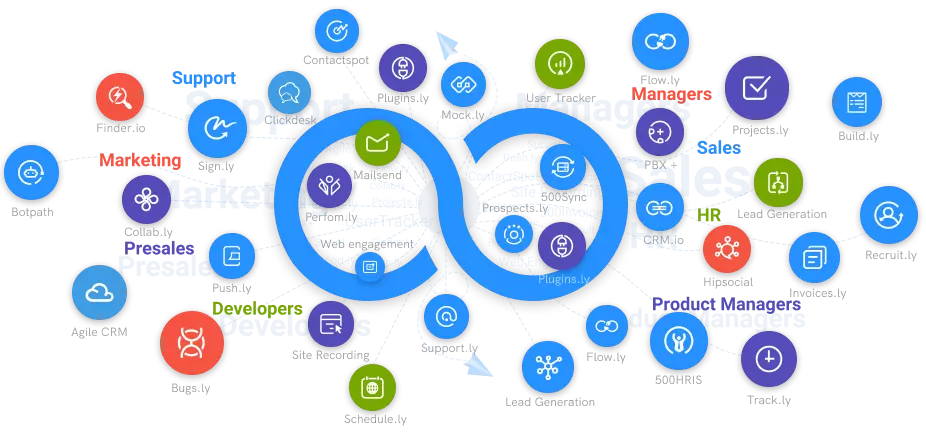What are Heatmaps?
Heatmaps are used in a variety of analytics applications, although they are most often used to display user activity on specific web pages or webpage designs.
#1
Distinctive Dashboard Analytics
#2
Unlimited Recordings
#3
User Behavior Analytics
#4
Improved Engagement Rate
#5
Real-time Monitoring System
#6
Customer Behaviour Analytics
#7
User Experience Optimization
#8
Improved Conversions & Revenue
#9
Unbelievable pricing - the lowest you will ever find
#10
Everything your business needs - 50 apps, 24/5 support and 99.95% uptime
A heatmap is a graphical depiction of data that uses a color-coding scheme to represent various values. Heatmaps can be used to illustrate where visitors have clicked on a website, how far down a page they have scrolled, or the results of eye-tracking studies. Heatmaps are used to display visitor activity on your websites or web pages, such as where users have clicked most on a page or how far visitors have scrolled down a page. If you have a website and want to know which sections of your website receive the most attention, a heat map tells you in a visual form (in a picture) with color-coding that is easy to grasp and may help you make decisions. A heat map is just a color scale or range that shows which areas of a website attract the most attention.
Heatmaps aid in the understanding of complicated data by providing a summary perspective of your data in the form of an image. The data for a heatmap is collected from a web page. It employs a dark-to-light color scale to show which web page content or region receives the most attention. For example, the region where the viewer clicks the most is given a dark hue, whereas the area where the viewer pays no attention is given a light tint. As we all know, heat is represented by a dark red hue that is warm, and blue represents cool light intensity; a heat map employs this color scheme. This is why we named it Heatmap, and it is simply comprehensible because we are familiar with the warm to the cold color system.
In digital marketing, friction is any aspect of the conversion process that makes a user less likely to convert. Friction on a post-click landing page might be a long-form, a poor message fit, or too much content. Heat maps highlight areas that may be generating friction, allowing you to perform A/B testing and increase the post-click landing page conversion rate. A heat map on the following two factors can help you determine how successful a web page is:
- The amount of information that visitors interact with on the website.
- Examine how much of the page visitors actually read?, What are the activities that users perform?, What do visitors click on? Do they click the CTA button?, fill out the form fields? and so on... based on this data, you may determine which page components are effective and which are not.
Types Of Heatmaps
We see heatmaps utilized in a variety of contexts in our daily lives, such as in news for weather forecasts or on real estate websites. They are often used to present data in an intelligible manner. They are used to signify the value of a webpage's content or to provide you with information on which areas of the webpage readers clicked the most in a color-coded style. Below we have mentioned mjor types of heatmaps.
1. Click Tracking Heatmaps
The most popular form of heatmap is a click tracking heatmap, which records data depending on where visitors click on your post-click landing page. Click maps can show you if your visitors are clicking where you want them to on your post-click landing pages. The CTA button should receive the most visitor clicks on a post-click landing page because it is the sole clickable element on the page. (A conversion ratio of one-clicked element per conversion goal, i.e. one clickable element per conversion goal) It informs you about the regions on your website where viewers clicked the most. It will show you the most clicked area with a dark color and the least clicked area with a light hue.
2. Scroll Maps
Scroll maps track visitors' scrolling activity, allowing you to know exactly where they scrolled on the page. This sort of heatmap reveals if your page's length is optimal for user experience. Scroll maps are most commonly utilized on long-form sales pages. Scroll heatmaps indicate how far down the viewer scrolls your website and a color spectrum from dark to light. A scroll map identifies the points at which people quit your website during the reading process. Using this data, you may form a theory about why visitors are only scrolling down to a specific point, and then run A/B tests to verify or refute your idea.
3. Mouse Tracking Heatmaps/ Hover Maps
Hover maps are heat maps that display the motions of the user's mouse on your post-click landing page. The main issue with hover maps is that it's not always possible to precisely link a visitor's mouse movements to what they're really looking at. The fact that a user's mouse remained on the headline for 5 minutes does not imply that they are still reading the headline.
4. Eye-Tracking Heatmaps
Eye-tracking heatmaps capture the motions of visitors' eyes while they gaze at your post-click landing page. Typically, eye-tracking experiments are carried out in laboratories, with participants wearing specific tracking equipment that properly detects eye movement. Eye-tracking research may now be carried out using webcams. By monitoring where visitors gaze on a website, you may position essential page components in the visitors' natural eye path, boosting the likelihood that they will complete the conversion objective. It's critical to understand exactly what you're looking at when studying eye-tracking heat map data so that you can analyze the data correctly.
5. Confetti Heatmaps
These heatmaps show you the number of clicks from various groups of viewers, as well as where these clicks are originating from and which referral source segment they are coming from. This will assist you in determining which referral source provides you with the most relevant users. Confetti employs a unique color dot for each referral section. Various nations, for example, will be represented by different colors.
Heat maps are a useful tool for determining what actions visitors take on your website and which page components engage them. Heat maps to aid in the optimization of the conversion journey by allowing for the creation of post-click landing pages that successfully engage users. PPC managers may utilize the maps to increase the ROI of their advertising by linking advertisements to appropriate and specialized post-click landing sites.





